
Telegraphy is the long-distance transmission of messages where the sender uses symbolic codes, known to the recipient, rather than a physical exchange of an object bearing the message. Thus flag semaphore is a method of telegraphy, whereas pigeon post is not. Ancient signalling systems, although sometimes quite extensive and sophisticated as in China, were generally not capable of transmitting arbitrary text messages. Possible messages were fixed and predetermined, so such systems are thus not true telegraphs.
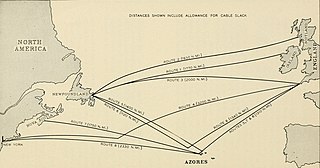
TAT-1 was the first submarine transatlantic telephone cable system. It was laid between Kerrera, Oban, Scotland and Clarenville, Newfoundland. Two cables were laid between 1955 and 1956 with one cable for each direction. It was inaugurated on September 25, 1956. The cable was able to carry 35 simultaneous telephone calls. A 36th channel was used to carry up to 22 telegraph lines.
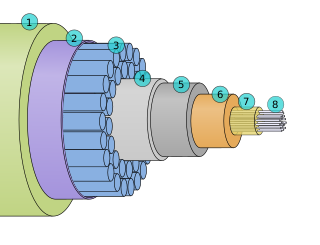
A submarine communications cable is a cable laid on the seabed between land-based stations to carry telecommunication signals across stretches of ocean and sea. The first submarine communications cables were laid beginning in the 1850s and carried telegraphy traffic, establishing the first instant telecommunications links between continents, such as the first transatlantic telegraph cable which became operational on 16 August 1858.

Transatlantic telegraph cables were undersea cables running under the Atlantic Ocean for telegraph communications. Telegraphy is an obsolete form of communication, and the cables have long since been decommissioned, but telephone and data are still carried on other transatlantic telecommunications cables.

Mercury Communications was a national telephone company in the United Kingdom, formed in 1981 as a subsidiary of Cable & Wireless, to challenge the then-monopoly of British Telecom (BT). Although it proved only moderately successful at challenging BT's dominance, it led the way for new communication companies to attempt the same.

Cable & Wireless plc was a British telecommunications company. In the mid-1980s, it became the first company in the UK to offer an alternative telephone service to British Telecom. The company later offered cable TV to its customers, but it sold its cable assets to NTL in 2000. It remained a significant player in the UK telecoms market and in certain overseas markets, especially in the former British colonies of the Caribbean, where it was formerly the monopoly incumbent. It was also the main supplier of communication in the British South Atlantic, including Saint Helena and the Falkland Islands. It was listed on the London Stock Exchange and was a constituent of the FTSE 100 Index.

Porthcurno is a small village covering a small valley and beach on the south coast of Cornwall, England in the United Kingdom. It is the main settlement in a civil and an ecclesiastical parish, both named St Levan, which comprise Porthcurno, diminutive St Levan itself, Trethewey and Treen.

A cable layer or cable ship is a deep-sea vessel designed and used to lay underwater cables for telecommunications, for electric power transmission, military, or other purposes. Cable ships are distinguished by large cable sheaves for guiding cable over bow or stern or both. Bow sheaves, some very large, were characteristic of all cable ships in the past, but newer ships are tending toward having stern sheaves only, as seen in the photo of CS Cable Innovator at the Port of Astoria on this page. The names of cable ships are often preceded by "C.S." as in CS Long Lines.
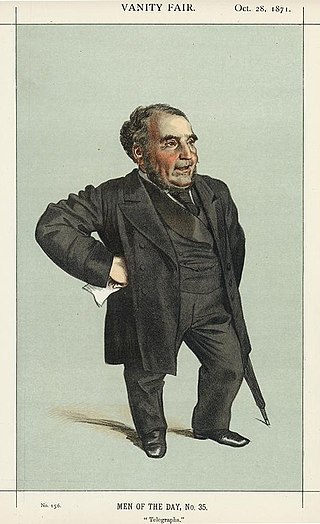
Sir John Pender KCMG GCMG FSA FRSE was a Scottish submarine communications cable pioneer and politician.

Robert Stirling Newall FRS FRAS was a Scottish engineer and astronomer.
William Thomas Henley (1814–1882) was a pioneer in the manufacture of telegraph cables. He was working as a porter in Cheapside in 1830, leaving after disputes with his employer, and working at the St Katherine Docks for six years. During those years he was determined to learn a trade and used money from an aunt to purchase a lathe, vice and lumber with which he made a work bench. With those tools he taught himself to turn wood and brass and began to experiment, including with electricity.
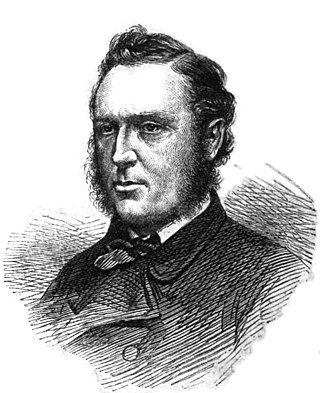
Sir James Anderson (1824–1893) captained SS Great Eastern on the laying of the Transatlantic telegraph cable in 1865 and 1866.
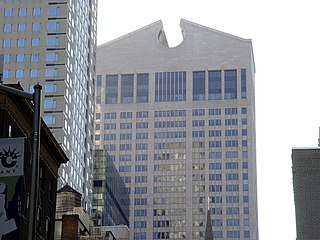
AT&T Corporation, commonly referred to as AT&T, an abbreviation for its former name, the American Telephone and Telegraph Company, was an American telecommunications company that provided voice, video, data, and Internet telecommunications and professional services to businesses, consumers, and government agencies.
Cable & Wireless Communications Ltd operating as C&W Communications is a telecommunications company which has operations in the Caribbean and Central America. It is owned by Liberty Latin America and is headquartered in Denver, Colorado, US.
Saint Helena, Ascension and Tristan da Cunha is a British Overseas Territory in the South Atlantic, consisting of the island of Saint Helena, Ascension Island and the archipelago of Tristan da Cunha including Gough Island. Their communications provision includes dedicated radio and television stations, and telecommunications infrastructure.

The Imperial Wireless Chain was a strategic international communications network of powerful long range radiotelegraphy stations, created by the British government to link the countries of the British Empire. The stations exchanged commercial and diplomatic text message traffic transmitted at high speed by Morse code using paper tape machines. Although the idea was conceived prior to World War I, the United Kingdom was the last of the world's great powers to implement an operational system. The first link in the chain, between Leafield in Oxfordshire and Cairo, Egypt, eventually opened on 24 April 1922, with the final link, between Australia and Canada, opening on 16 June 1928.
CS Pacific was a cable ship registered in Copenhagen, Denmark, owned by the Great Northern Telegraph Company. The steel vessel was built in 1903 in the shipyards of Burmeister & Wain and delivered that year for the purpose of laying and repairing submarine cable in the Far East networks. Historical records of this cable ship are kept in the National Maritime Museum of Denmark. Pictorial records of the ship are available through the DieselHouse interactive initiative.

The India Rubber, Gutta Percha and Telegraph Works Company was a London-based company based in Silvertown, East London. It was founded by Stephen William Silver in March 1864 as Silver's Indiarubber Works and Telegraph Cable Company Ltd. However in July that year the name was changed to the India Rubber, Gutta Percha and Telegraph Works Company.
The Submarine Telegraph Company was a British company which laid and operated submarine telegraph cables.

In the nineteenth century, the United Kingdom of Great Britain and Ireland had the world's first commercial telegraph company. British telegraphy dominated international telecommunications well into the twentieth. Telegraphy is the sending of textual messages by human operators using symbolic codes. Electrical telegraphy used conducting wires to send messages, often incorporating a telegram service to deliver the telegraphed communication from the telegraph office. This is distinct from optical telegraphy that preceded it and the radiotelegraphy that followed. Though Francis Ronalds first demonstrated a working telegraph over a substantial distance in 1816, he was unable to put it into practical use. Starting in 1836, William Fothergill Cooke, with the scientific assistance of Charles Wheatstone, developed the Cooke and Wheatstone telegraph. The needle telegraph instrument suggested by Wheatstone, the battery invented by John Frederic Daniell, and the relay invented by Edward Davy were important components of this system.















